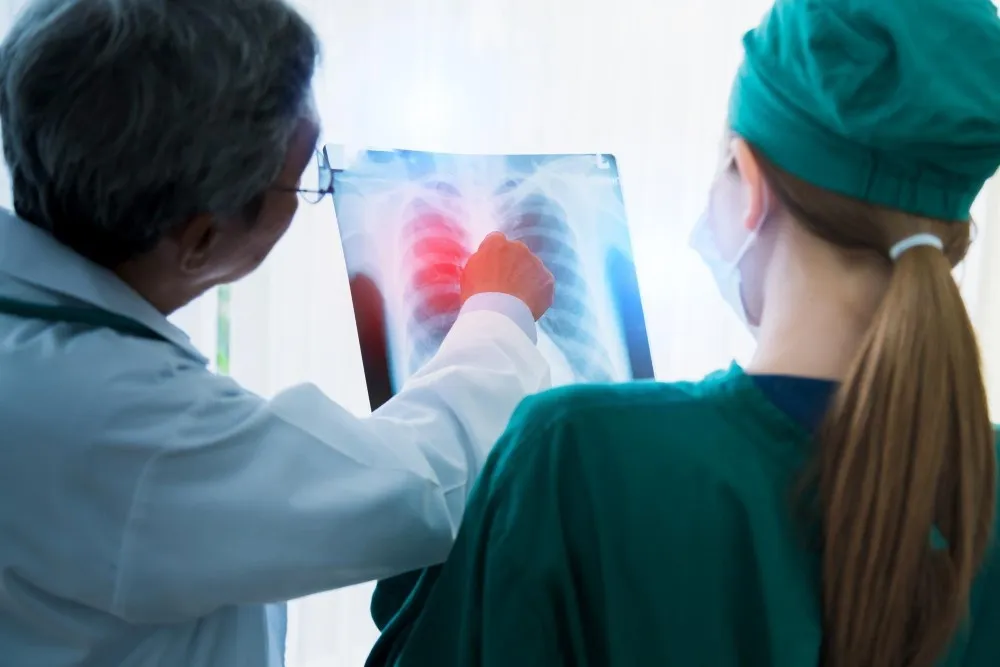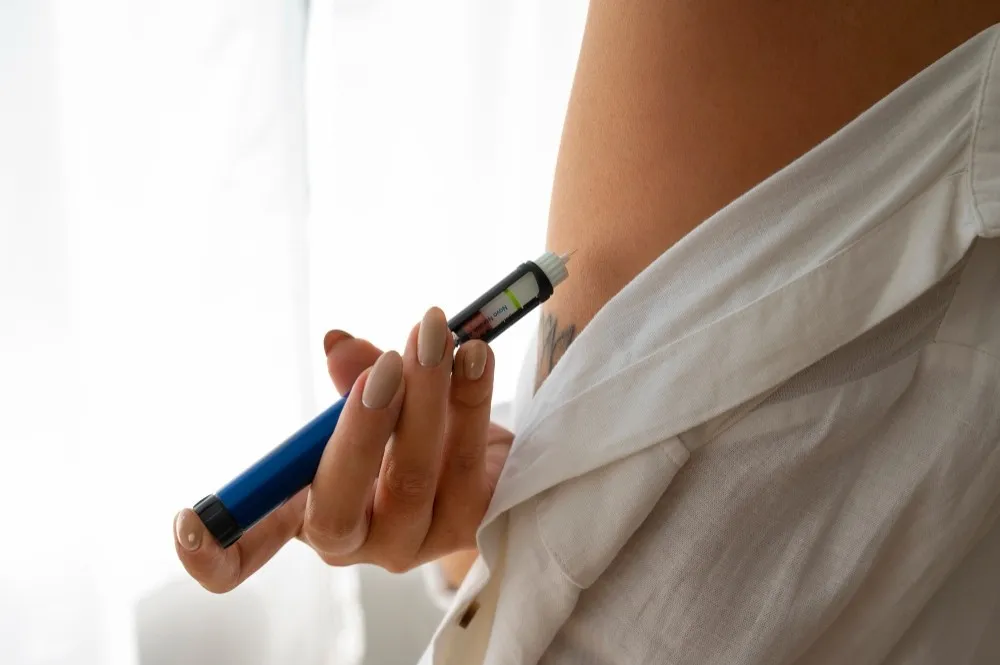Q1 What is Bronchoscopy?
Bronchoscopy is a technique which is used to view the airways (larynx - voice box, vocal cords, trachea - wind pipe, bronchi - larger airways, bronchioles - smaller airways) by inserting a tube (bronchoscope) in the airways. There are 2 types of bronchoscopy
- Rigid Bronchoscopy - It is used in cases of foreign body impaction in airways & to control bleeding in the airways.
- Flexible/ Fiberoptic Bronchoscopy - It is used for both diagnostic & treatment purposes.
Q2 What is a Bronchoscope?
Bronchoscope is a tube which is inserted inside the airways to view the airways (used for bronchoscopy). There are 2 types bronchoscopes:
- Rigid Bronchoscope - It is a straight, metal tube, which is used to visualize larger airways
- Flexible/Bronchoscope - It is a thin, fine and flexible tube attached with a light and a camera, used to visualize larger & smaller airways.
Q3 What is Bronchoalveolar lavage?
This procedure involves the use of a bronchoscope, whichis inserted into mouth or nose or tracheostomy tube or endotracheal tube, down to the lungs and then a fluid is spewed through the tube into the lungs & is collected again. This fluid is then sent for a lab test for evaluation.
Q4 Why is Bronchoscopy performed? What are the indications?
Bronchoscopy is performed for diagnostic & therapeutic (treatment) purposes. Some of the indications are:
- Tumour/cancer
- Airway obstruction
- Infection
- Inflammation
- Persistent cough
- Blood in cough
- Biopsy
- Broncho-alveolar lavage
- Control of bleeding in airways
- Removal of foreign body/any other substances (mucus plugs, polyps, etc) from airways
- Stent placement
Q5 What is the duration of the procedure?
Bronchoscopy generally takes about 30 minutes, but it depends on the indication for which the bronchoscopy is to be performed.
Q6 For how many days do I need to get admitted in the hospital?
Depending on the condition you are suffering from, your doctor decides if you need to get admitted to the hospital for the procedure or not. It can also be done in the OPD setting. You can go home after the procedure, but make sure that you take a ride home.
Q7 Is Bronchoscopy painful?
This procedure is generally done in the operation room of a hospital and during the procedure the patient is under general anesthesia, so that he does not feel any pain or discomfort. Also you do not face major discomfort during the procedure. This is because you are given medicines or anesthesia to make you numb and drowsy. It is recommended that you do not consume any food or drink for some time after the procedure.
Q8 Will I be given anaesthesia? If yes, what type of anaesthesia?
There are two kinds of bronchoscopy tests, one uses a flexible tube and the other uses a rigid tube. If your doctor uses the flexible tube for bronchoscopy then you are intravenously given some medicines to numb your throat and make you feel drowsy. Thus you are sub-conscious during the procedure. If the tube is being passed through your nose, a numbing gel is applied. In case your doctor uses a rigid tube, you are given general anesthesia and this procedure is more painful.
Q9 Who performs Bronchoscopy?
Generally a bronchoscopy test is performed in an endoscopy room or operation theatre in the hospital by a pulmonologist or a thoracic surgeon.
Q10 What is the duration of the procedure?
A bronchoscopy test is a very short procedure and takes only about 30 minutes on the whole. It takes about 10 minutes for the doctors to prepare and 20 minutes to insert the tube and observe the lungs through the monitor.
Q11 What are the risks/complications of the procedure?
Bronchoscopy is generally safe and the risks are short lived and temporary, however, there is a risk of developing the following complications:
- Bleeding
- Bronchial Perforation
- Bronchospasm
- Pneumothorax (air in space outside lungs - pleural cavity)
- Arrhythmias
- Difficulty in breathing
- Fever
- Throat infection
- Lung Collapse
- Nausea
- Vomiting
- Hoarse voice/sore throat
Q12 What should I do to prepare myself for the procedure?
Inform your doctor if:
- You are allergic to any food, medicine, tape, etc.
- You are pregnant.
- You are taking regular medications
- You are suffering from heart problems, or any other disease (diabetes, hypertension, psychiatric disorder)
Before the operation, certain blood tests are done. Your fitness is evaluated for the anesthesia. Generally your doctor recommends that you do not take any food after midnight, on the night just before your procedure.
Q13 How is Bronchoscopy performed?
- The doctor will explain you the steps of bronchoscopy, risks & complications involved.
- Informed consent form will be given to you for better understanding of the procedure. You have to sign the informed consent form before the procedure.
- You will be given a gown to wear & made to lie down on the operating table.
- Your vitals (heart rate, respiratory rate, blood pressure, oxygen saturation) will be monitored.
- Appropriate anesthesia (general or local) will be given depending on the type of bronchoscopy.
- A medication will be sprayed into your mouth & throat to make it numb. A sedative may be required to make you sleep, but arousable.
- The bronchoscope will be inserted in your mouth and down your throat. It may be discomforting, but not painful.
- You will not be able to swallow your saliva during the procedure. It is suctioned with the help of a thin tube.
- Bronchoalveolar lavage or biopsy may be performed if indicated.
- The tube is removed once the procedure is done and you are allowed to rest for a while.
- You will be sent to the recovery room for observation after the procedure is over.
Q14 What should I expect after the procedure is over?
- You will be sent to the recovery room for observation. Your vitals will be monitored.
- You will not be allowed to eat for sometime after the procedure.
- You may experience blood in your sputum or saliva while coughing.
- A chest Xray may be done after the procedure.
- You may experience nausea, sore throat, fever, chills after the procedure.
Q15 Can I go to work after Bronchoscopy?
- It is necessary for the anesthetic drugs to completely wear off before you go on with your daily routine, especially if you are put under general anesthesia for the procedure.
- Therefore, it is best that you take the day off from work on the day of the procedure and go back to work 24 hours after the procedure.
- Make sure that you make arrangements for a ride back home as you will not be in the condition to drive on your own.
Q16 Will Bronchoscopy affect my voice?
Yes, bronchoscopy may affect your voice but it will only be for a short while. Your voice might become hoarse for some time and you can suffer from a sore throat.
Q17 What are the precautions to be taken after the procedure is over?
- Immediately after the procedure you will be kept under observation for an hour or two.
- Within the first 24 hours of the procedure you will be slightly disoriented, thus it is recommended that you arrange for a relative or friend to take you home.
- Avoid any strenuous work or lifting heavy weight for a day after the procedure.
- Try not to cough and clear your throat if you feel discomfort. This will help to prevent any bleeding.
- Do not smoke, it can cause damage to your windpipe.
- You might cough out some brown blood for a day or two after the procedure. This is common, so don't be alarmed. But if this persists and you start coughing up red blood, contact your doctor immediately.
- In case you face trouble swallowing food, breathing or suffer from chest pain, visit your doctor immediately and receive the relevant treatment.

Reviewed by







